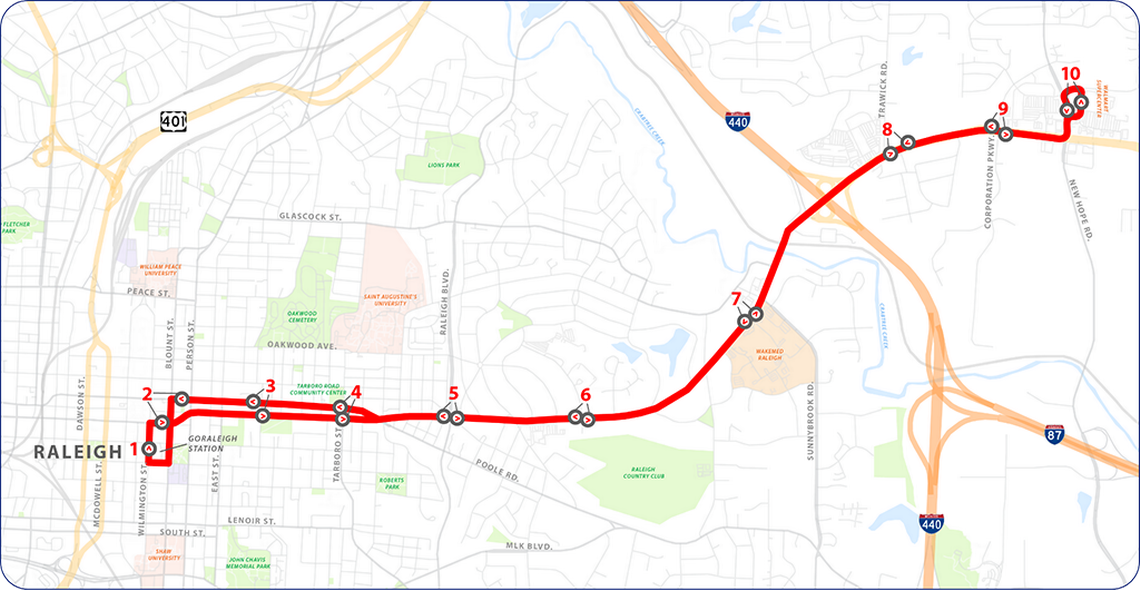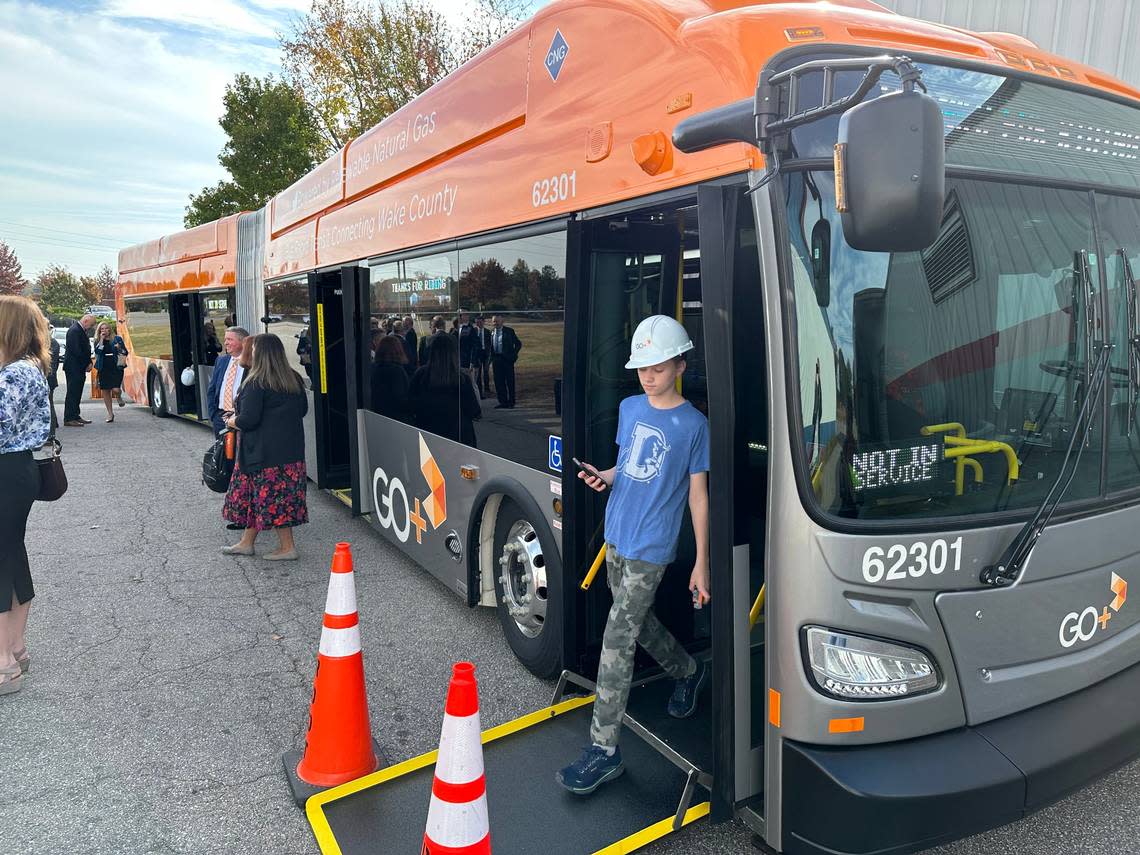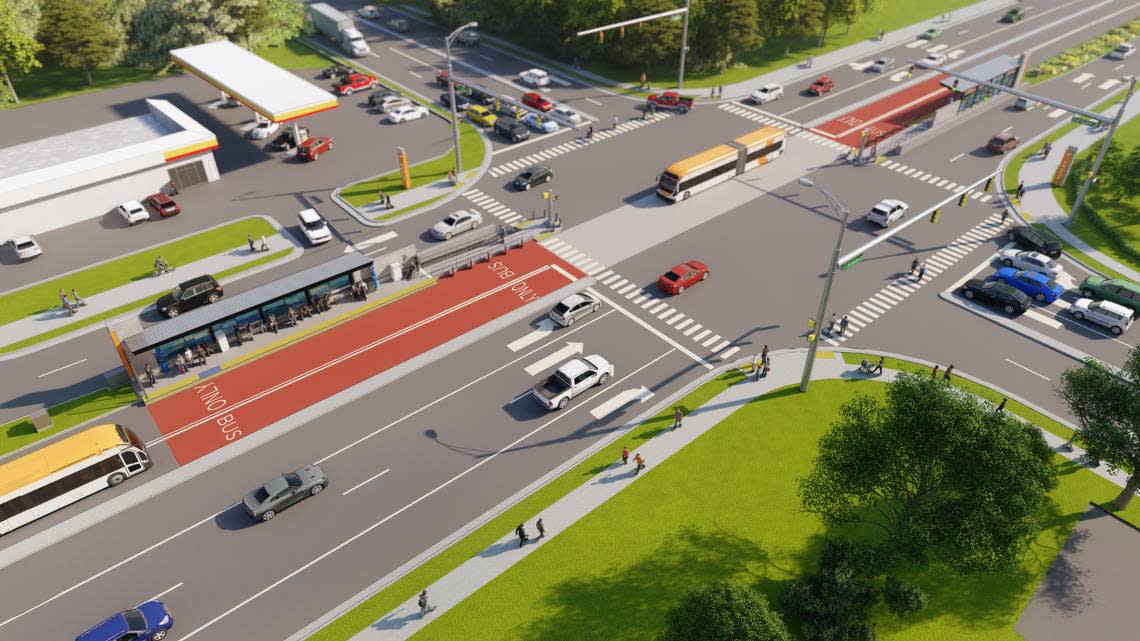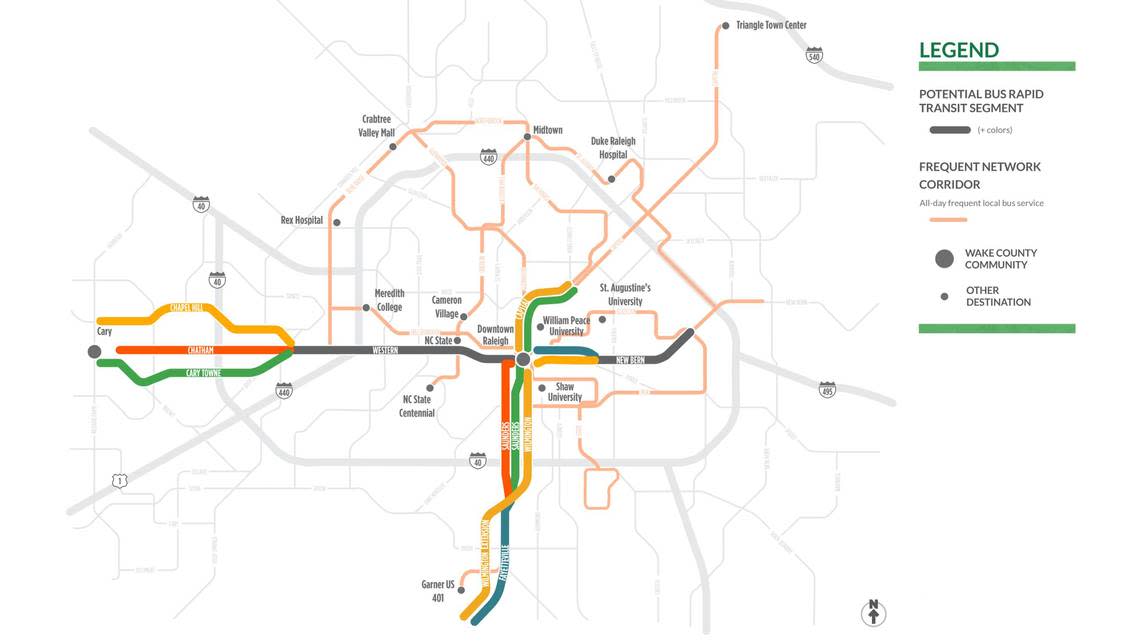Raleigh is building a new type of mass transit. What exactly is bus rapid transit?
When county voters approved the Wake Transit Plan in 2016, they endorsed a form of transportation few of them had ever seen or experienced.
Now workers are poised to begin building Raleigh’s first bus rapid transit or BRT line. BRT is a hybrid of sorts, giving city buses some of the convenience and trappings of a more sophisticated — and more expensive — rail transit system.
The 5.4-mile New Bern Avenue BRT will run between downtown and a new 100-space park-and-ride lot east of the Beltline, along what is already one of GoRaleigh’s busiest bus corridors.

New Bern Avenue is the first of four BRT lines the city plans to build, radiating from downtown in four directions. Chapel Hill Transit also plans a BRT line connecting the University of North Carolina and its medical center with park-and-ride lots on the north and south sides of town.
With construction set to begin soon, here’s a primer on bus rapid transit in the Triangle.
What exactly is bus rapid transit?
BRT is a bus system with some of the amenities and advantages of rail at much lower cost. Passengers buy tickets in advance and board from covered, elevated platforms, as on a train car. Displays in the stations will show when the next bus is due to arrive.
The buses also get priority green lights at intersections and often travel in their own dedicated lanes, to avoid getting slowed by traffic. The New Bern Avenue BRT line will have 3.3 miles of bus-only lanes.
Is this a new idea?
While new to the Triangle, BRT or busway systems carry commuters in dozens of cities around the world. A group of politicians and business leaders from the Triangle rode on Ottawa’s Transitway BRT system during a visit to the Canadian capital in 2002. Another Triangle delegation traveled to Richmond, Virginia, in 2018 to check out that city’s Pulse BRT line.
The New Bern Avenue BRT will be the first built in North Carolina.
Will the BRT buses be the same ones GoRaleigh operates now?
No. The BRT buses will be a unique design. They’ll be longer, articulated buses capable of holding more than GoRaleigh’s 40-foot buses. They’ll also have doors on both sides, room for bikes on board and lower floors to ease loading and unloading at the stations. The city will eventually have 7 of the buses, which run on compressed natural gas.

What does BRT cost to build?
GoRaleigh expects to spend $96.75 million to plan and build the 5.4-mile New Bern Avenue line. That comes out to a little less than $18 million per mile. In contrast, the proposed commuter rail line between Durham and Garner was expected to cost an estimated $75 million to $80 million per mile.
Where will the money come from?
A combination of federal and local tax dollars. Raleigh has received $47 million from the Federal Transit Administration, while $49.75 million will come from the city and the half-cent sales tax that Wake County voters approved for transit projects in 2016.
When will these buses be running?
The city hosted a ground-breaking ceremony for the New Bern BRT on Nov. 7, and construction is expected to get underway in earnest early next year. Buses are expected to begin operating by the end of 2025.

Where will the other BRT lines go and what’s the status of those?
The three other planned BRT lines will radiate from downtown Raleigh to the north, west and south.
Next up is the southern leg, which will connect downtown with Garner, following South Wilmington Street to Garner Station Boulevard and the Walmart Supercenter on Rupert Road. The city is still doing early design work on the 5.1-mile route and expects to finish the final designs in 2025.
Further out, a western BRT line will connect downtown Raleigh with downtown Cary, while two northern lines will run between downtown and North Hills and Triangle Town Center.

What’s the status of bus rapid transit in Chapel Hill?
Chapel Hill Transit hopes to begin building an 8.2-mile BRT line between Eubanks Road, UNC Hospitals and Southern Village in 2027. It will seek federal funding to cover 80% of the estimated $180 million cost, with the rest coming from the Orange County Transit Plan.
